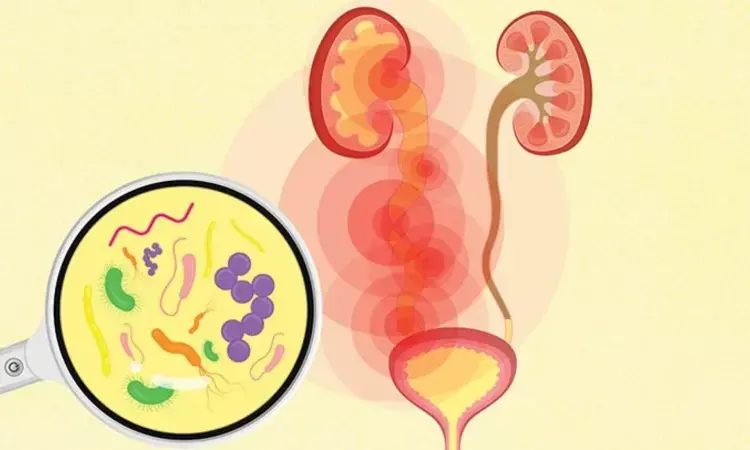- Home
- Medical news & Guidelines
- Anesthesiology
- Cardiology and CTVS
- Critical Care
- Dentistry
- Dermatology
- Diabetes and Endocrinology
- ENT
- Gastroenterology
- Medicine
- Nephrology
- Neurology
- Obstretics-Gynaecology
- Oncology
- Ophthalmology
- Orthopaedics
- Pediatrics-Neonatology
- Psychiatry
- Pulmonology
- Radiology
- Surgery
- Urology
- Laboratory Medicine
- Diet
- Nursing
- Paramedical
- Physiotherapy
- Health news
- Fact Check
- Bone Health Fact Check
- Brain Health Fact Check
- Cancer Related Fact Check
- Child Care Fact Check
- Dental and oral health fact check
- Diabetes and metabolic health fact check
- Diet and Nutrition Fact Check
- Eye and ENT Care Fact Check
- Fitness fact check
- Gut health fact check
- Heart health fact check
- Kidney health fact check
- Medical education fact check
- Men's health fact check
- Respiratory fact check
- Skin and hair care fact check
- Vaccine and Immunization fact check
- Women's health fact check
- AYUSH
- State News
- Andaman and Nicobar Islands
- Andhra Pradesh
- Arunachal Pradesh
- Assam
- Bihar
- Chandigarh
- Chattisgarh
- Dadra and Nagar Haveli
- Daman and Diu
- Delhi
- Goa
- Gujarat
- Haryana
- Himachal Pradesh
- Jammu & Kashmir
- Jharkhand
- Karnataka
- Kerala
- Ladakh
- Lakshadweep
- Madhya Pradesh
- Maharashtra
- Manipur
- Meghalaya
- Mizoram
- Nagaland
- Odisha
- Puducherry
- Punjab
- Rajasthan
- Sikkim
- Tamil Nadu
- Telangana
- Tripura
- Uttar Pradesh
- Uttrakhand
- West Bengal
- Medical Education
- Industry
D-Mannose prophylaxis not effective for preventing UTI after kidney transplantation: Manotras Study

Spain: Non-antibiotic therapy is an unmet need for UTI (urinary tract infection) prevention after kidney transplantation, however, the use of d-Mannose plus proanthocyanidins (PAC) does not seem capable of its prevention, which is the key takeaway from the Manotras study. The study by Spanish researchers and was published online in the journal Nefrología.
The researchers reported that the use of d-Mannose plus PAC in the early post-transplant period is safe and well tolerated but does not seem to add any protective effect, confirming the complexity of pathogenesis in the kidney transplant population and the unmet need for preventive strategies for UTI.
The main finding of the study is that the use of d-Mannose plus PAC does not reduce UTI incidence in the first three months after kidney transplantation compared with PAC alone.
UTI is the most common infection that occurs after kidney transplantation (KTX). It increases the mortality and morbidity in recipients of kidney allograft. On the other hand, antibiotic treatment and prophylaxis for UT increases antibiotic resistance and Clostridioides difficile infection. Therefore, searching for prevention strategies aimed at limiting and reducing the incidence of UTI should be pursued.
There is a lack of non-antibiotic alternatives in kidney transplant UTIs. D-mannose is a simple sugar that inhibits bacterial attachment to the urothelium as does Proanthocyanidins; both could act as a synergic strategy for UTI prevention, however, their safety and efficacy have not been evaluated in the kidney transplant population yet.
Melissa Rau, Bellvitge University Hospital, Hospitalet de Llobregat, Barcelona, Spain, and colleagues conducted the clinical trial to test the safety and efficacy of a 24-h prolonged-release formulation of d-Mannose plus PAC vs. PAC alone, administered on UTI and/or AB episodes throughout the first 3 months after kidney transplantation, pursuit by a follow-up period of 3 months.
The researchers performed a pilot prospective, double-blind randomized trial including sixty de novo kidney transplant recipients. They were randomized in the ratio of 1:1 to receive a prophylactic strategy based on a 24-h prolonged-release formulation of d-Mannose plus Proanthocyanidins versus PAC alone.
The supplements were taken for the initial 3 months after the kidney transplant and followed up for three months. The study's main objective was to search if adding Mannose to PAC alone reduced UTI/asymptomatic bacteriuria incidence in the first 6 months post-transplantation.
The study revealed the following findings:
- During a mean follow-up period of 4.7 ± 3.1 years, 97 patients suffered from >25% decline in eGFR.
- When compared to those without eGFR decline, patients with eGFR decline had higher fasting triglyceride levels, fasting glucose levels, and TyG indexes.
- The Cox proportional hazard regression model revealed that the TyG index (hazard ratio [HR] = 1.490), office systolic blood pressure (HR = 1.013), diabetes mellitus (HR = 1.797), and baseline eGFR (HR = 1.015) were associated with renal events.
"With the present study, we have provided useful information on a prophylactic strategy that has proven to be effective in non-transplanted populations," the researchers wrote. "Unfortunately, the combination of d-Mannose and PAC in the early post-transplant period, even though well-tolerated and safe, does not seem to add any protective effect, confirming once again the complexity of pathogenesis in the kidney transplant population and the unmet need for preventive strategies for UTI."
Reference:
Rau M, Santelli A, Mart´ı S, D´ıaz MI, Sab´e N, Fiol M, Riera L, Etcheverry B, Codina S, Coloma A, Carreras-Salinas A, Ardanuy C, Cruzado JM, Melilli E. Randomized clinical trial of non-antibiotic prophylaxis with D-Mannose plus Proanthocyanidins vs. Proanthocyanidins alone for urinary tract infections and asymptomatic bacteriuria in De-Novo kidney transplant recipients: the Manotras study. Nefroligía. Published online September 1, 2023. doi:10.1016/j.nefro.2023.08.010
Dr Kamal Kant Kohli-MBBS, DTCD- a chest specialist with more than 30 years of practice and a flair for writing clinical articles, Dr Kamal Kant Kohli joined Medical Dialogues as a Chief Editor of Medical News. Besides writing articles, as an editor, he proofreads and verifies all the medical content published on Medical Dialogues including those coming from journals, studies,medical conferences,guidelines etc. Email: drkohli@medicaldialogues.in. Contact no. 011-43720751


